 世界上有哪些鲜为人知的古代“奇观”
世界上有哪些鲜为人知的古代“奇观”
正文翻译
Lesser Known Ancient "Wonders" of the World
世界上鲜为人知的古代“奇观”
So everyone knows about Stonehenge, the Great Pyramids, the Colossus of Rhodes, the Hanging Gardens of Babylon, the Lighthouse (and of course) the Library of Alexandria, the Colosseum and Circus Maximus of Rome, and the Great Wall of China. But what are some other important but less discussed architectural achievements of the ancient and classical world?
每个人都知道巨石阵、大金字塔、罗得岛、巴比伦空中花园、灯塔(当然还有)亚历山大图书馆、罗马竞技场和罗马圆形大剧场以及中国长城。但是,古代和古典世界的一些其他一样重要但较少讨论的建筑成就有哪些?
Personally, I think Roman sewer system and their public baths are a fantastic wonder in and of themselves. Although less "flashy" than the well-known wonders, they served an extremely important sanitary purpose that helped make the Roman civilization stand-up even to a lot of modern expectations.
就我个人而言,我认为罗马下水道系统和他们的公共浴室本身就是一个奇妙的奇迹。尽管它们不像那些著名的奇迹那样“浮华”,但它们起到了极其重要的卫生目的,帮助罗马文明站起来,甚至达到了许多现代的做法。
世界上鲜为人知的古代“奇观”
So everyone knows about Stonehenge, the Great Pyramids, the Colossus of Rhodes, the Hanging Gardens of Babylon, the Lighthouse (and of course) the Library of Alexandria, the Colosseum and Circus Maximus of Rome, and the Great Wall of China. But what are some other important but less discussed architectural achievements of the ancient and classical world?
每个人都知道巨石阵、大金字塔、罗得岛、巴比伦空中花园、灯塔(当然还有)亚历山大图书馆、罗马竞技场和罗马圆形大剧场以及中国长城。但是,古代和古典世界的一些其他一样重要但较少讨论的建筑成就有哪些?
Personally, I think Roman sewer system and their public baths are a fantastic wonder in and of themselves. Although less "flashy" than the well-known wonders, they served an extremely important sanitary purpose that helped make the Roman civilization stand-up even to a lot of modern expectations.
就我个人而言,我认为罗马下水道系统和他们的公共浴室本身就是一个奇妙的奇迹。尽管它们不像那些著名的奇迹那样“浮华”,但它们起到了极其重要的卫生目的,帮助罗马文明站起来,甚至达到了许多现代的做法。
评论翻译
[dexed]
In term of economic impact or total size: China's Grand Canal.
就经济影响或总规模而言:中国大运河。

(京杭大运河)
AlexAiakides
It’s not like it didn’t cost China, especially the dynasty Sui that was responsible for building it dearly.
这并不意味着它没有让中国付出代价,尤其是负责建造它的隋朝。
deezee72
The botched war against Gorgoryeo was a more immediate cause of the fall of the Sui dynasty.
The future Emperor Gaozu of Tang even served as a logistics officer in that campaign before being reassigned to fighting the Eastern Turks. Many of the other early supporters of the Tang were other military officials dissatisfied with the handling of the war.
When you break it down, nearly every one of the ancient wonders came at an enormous price. And while the cost of these mega-projects certainly took its toll, the fact that renovations of the Grand Canal continued into the Tang dynasty casts a lot of doubt on the claim that overspending on infrastructure is what brought down the Sui.
对高句丽的拙劣战争是隋朝灭亡的一个更直接的原因。
未来的唐高祖甚至在这次战役中担任后勤官员,然后被重新分配到与东突厥人作战。许多其他早期支持唐的人是其他军事官员,对战争的处理都感到不满。
当你细究,几乎每一个古老的奇迹都是以巨大的代价换来的。虽然这些大型项目的成本确实造成了损失,但在唐代,大运河的翻修仍在继续,这一事实使人们对基础设施的超支是导致隋朝灭亡的原因的这种说法产生了很大的怀疑。
[dexed]
Didn’t it kill a shitload of peasants?
它不是导致了很多农民的死亡吗?
Keighlon
The grand canal system is absolutely astonishing. While europe was still chucking sticks at each other and living in huts china was building country wide water highways. The manpower forethought and organization of it blows my mind
大运河系统绝对是惊人的。当欧洲还在互相残杀,住在茅屋里的时候,中国正在建设全国范围的水上公路。他对人力的筹划和组织度让我大吃一惊。
deezee72
The Grand Canal is an amazing demonstration of China's organization, but let's not get too carried away. It was built at the end of the 6th century - I don't think it's too fair to say that Europe was "chucking sticks at each other and living in huts".
大运河是中国组织度的一个惊人的展示,但我们不要太激动。 它建于6世纪末——我不认为说欧洲“还在互相残杀,住在茅屋里”是一个公平的说法。
[dexed]
At that moment you can say that Europe (apart from Bizantine / East Roman Empire) was figuratively in a state of chucking sticks, because the fall of the Roman Empire brought a severe collapse of institutions and knowledge loss that might have been less developed than ancient Greece (in terms of institutional complexity and knowledge production), and was victim of wave after wave of sacks from German/Huns/Norsemen/Turkic and Mongols, whom may have indeed been living in structures closer to "huts" than to roman cities and villas. The Eastern Roman Empire and the Middle East were flourishing tho, so the "sticks and huts" hyperbole is half appropiate.
在那个时候你可以说欧洲(除了拜占庭/东罗马帝国) 确实处于一种互相残杀的状态,因为罗马帝国的垮台带来了制度的严重崩溃和知识的损失,导致其可能比古希腊还欠发达(在体制复杂性和知识生产方面),而且他们是一波又一波的洗劫的受害者,这些洗劫来自日耳曼/匈牙利/挪威人/突厥人和蒙古人,他们也可能确实生活在比罗马城市和别墅相比更接近“小屋”的建筑中。与此同时东罗马帝国和中东地区都在欣欣向荣,因此“残杀与茅屋”的夸张说法至少有一半是对的。
Sn_rk
Not really, no. Roman concepts of administration and infrastructure were being maintained for a long time, even if they slowly eroded.
并非如此,真的。罗马的行政管理和基础设施概念在欧洲被维持了很长一段时间,即使它们慢慢地被侵蚀。
Intranetusa
europe was still chucking sticks at each other and living in huts
No, that comes from incorrect stereotypical portrayals of the "Dark Ages." In the 6th century, the Eastern Roman Empire was rich, powerful, and technologically advanced, and emperor Justinian was partially successful at reconquering the Roman territories of the Western Empire that were lost.
The Scandinavian and Germanic people who also invaded Western Rome adopted many aspects of the Romans - culture, government, Latin, fashion, architecture, etc - so they weren't simply living in huts.
“还在互相残杀,住在茅屋里”
不,这是来自对“黑暗时代”的不正确的刻板印象。在6世纪,东罗马帝国是富有的,强大的,技术先进的,查士丁尼皇帝部分成功地重新征服了失去的西罗马帝国的罗马领土。
斯堪的纳维亚和日耳曼人虽然入侵了西罗马,但是他们接受了罗马人的许多方面--文化、政府、拉丁、时尚、建筑等--所以他们不仅仅住在小茅屋里。
Intranetusa
On a similar note, the Qin State's Fish Mouth Levee irrigation and flood control system in use to this day: https://en.wikipedia.org/wiki/Dujiangyan
类似地,秦国的河口灌溉和防洪系统至今仍在使用:https://en.wikipedia.org/wiki/Dujiangyan(都江堰的维基百科)
knavillus
The wonder that always amazes me is the Roman road system, including bridges. The number of bridges still standing and in use today was surprising to me and the scale of the road system at its peak was impressive.
令我惊讶的是罗马的道路系统,包括桥梁。今天仍然矗立和使用的来自罗马时代的桥梁数量令我感到惊讶,公路系统在高峰时的规模令人印象深刻。

(古罗马桥梁)
Qafqa
Don't forget the aqueducts.
别忘了引水渠
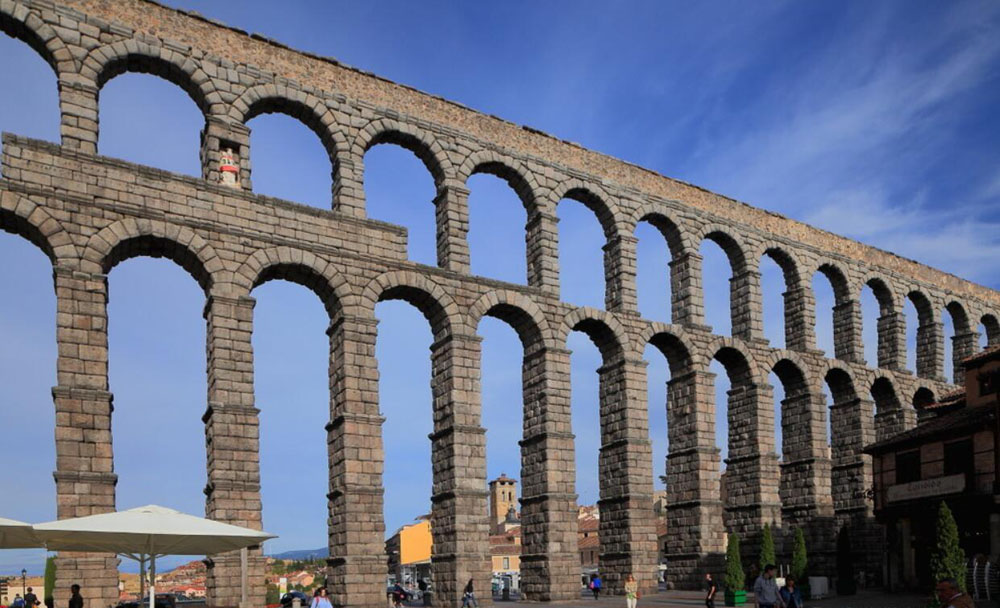
(罗马引水渠)
recuise
Yeah, but what have the Romans ever done for us?
是啊,但是罗马人为我们做了什么?
ecknorr
Could not have the Superbowl without Roman numerals.
没有罗马数字就不可能有超级碗。
SantasBananas
People often praise the Roman bridges, and I certainly agree that they are impressive and covered the empire in such a scale that I would not have dreamed of back in those days.
At the same time, the engineer in me can't help but chuckle at being impressed that those bridges still stand. That's a sign of those bridges being overbuilt - they put too much effort and resources into the structures to make them not fail for over a thousand years, when honestly they only needed them for a few hundred. That's effort and resources that they could have applied to other projects.
If I could commission a bridge that would last 300 years for $100,000 or one that lasts a millenium for $200,000, I'd pick the first in a heartbeat. Why spend an extra $100,000 on something functionally identical? In 300 years we might be beyond the point of using bridges, or we may have better bridge design for cheaper, or the location might be irrelevant. It's a waste of effort, imho. Sure, people in the future might be impressed, but that's not really worth much to me. It would be trivial for modern engineers to build bridges that last a millennium as well, it's just not worthwhile.
人们经常赞美罗马的桥梁,我当然同意它们覆盖帝国的规模令人印象深刻,以至于我有时不禁梦回罗马时代。
同时,作为工程师的我忍不住对因为那些桥梁仍然屹立不倒而感到印象深刻的人发笑。这是那些桥梁被过度建造的迹象--他们在结构中投入了太多的努力和资源,使他们在一千多年里不会倒塌,但老实说,他们只需要这些桥能用几百年。这些努力和资源他们本可以应用于其他项目的。
如果我能委托建造一座桥,可以花10万用300年,也可以用20万用一千年,我会选择第一座。为什么要花多10万在功能相同的东西上?在300年内,我们可能已经无需再使用这条桥梁,或者我们可能有更好的桥梁设计,以更便宜,或者位置可能更好。在我看来这就是浪费精力。 当然,未来的人们可能会对此印象深刻,但这对我来说并不太值得。对于现代工程师来说,建造长达一千年的桥梁也是微不足道的,但这是不值得的。
knavillus
I don’t think they thought in these terms though, structural and materials analysis that can predict longevity of a structure just didn’t exist back then. I’m guessing the primary motivation by the designer was to ensure it didn’t fail at any cost. I hadn’t really thought of it in those terms though, it’s really funny!
我不认为他们用这些方式来思考,但是,能够预测结构寿命的结构和材料分析在当时不存在。 我猜设计师的主要动机是确保它不会倒。不过,我从来没有以这种角度想过,这真的很有趣!
Arsnicthegreat
I'm not an expert, but I recall that before we developed the more complex mathematics to precisely engineer things to tight tolerance, the general solution was to estimate and round up, at risk of greater expense, to avoid failure.
我不是专家,但我记得,在我们开发更复杂的数学来精确地将事物设计到严格的容忍度之前,一般的解决方案是进行估计和总结,用更大的费用,来避免失败。
SantasBananas
Yeah, that's exactly my point - they made the bridges with such longevity because they didn't have the engineering confidence to not.
Still massively impressive structures, obviously. I'm just always a little ticked when people say they were able to build structures we can't anymore, or some other nonsense.
是的,这正是我的观点-他们建造了如此长寿的桥梁,是因为他们没有工程信心。
当然,这还是令人印象深刻的结构。当人们说古人能建造我们现代无法再建造的结构,或者其他类似的一些废话时,我总是有点生气。
idan_zamir
Gobekli Tepe definitely counts in my book. It is around 12,000 years old! An incredible a achivement for the time.
哥贝克力石阵在我的这里肯定很重要。它大约有12000岁了!这是一个不可思议的成就。
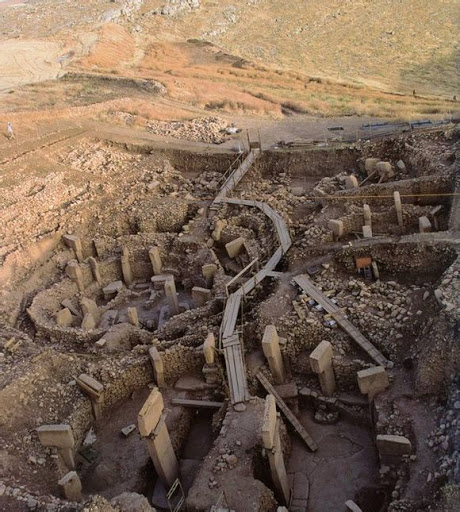
(哥贝克力石阵)
Andrewescocia
yuppers needs more exposure, if i was of a conspiratorial mind i would say the history of it is being repressed so they don't have to rip up all the text books and start again,
对哒,它需要更多的曝光,如果我是一个阴谋论者,我会说,它的历史正在故意被压制,这样他们就不必撕毁现在所有的教科书,重新编过。
Intranetusa
From what I've read, it's hard to estimate the age of Gobekli Tepe because different people/civilizations from different time periods kept inhabiting the same area and building on top of each other's ruins or even digging up the previous ruins. This may have caused intermingling of different artifacts from different timeperiods that can create confusion.
It's like if you planned your burial with your body buried with an iphone X, medi knight helmet from 1200 AD, and a Roman gladius from 100 BC...in a Native American burial ground continuously used from 1200 AD to the present day. And then a giant war happens and a totally different civilization in 3000 AD starts digging, building, and burying people in the same area. That'll confuse the hell out of archaeologists from 4000 AD.
But nonetheless, the age ranges for Gobekli Tepe are all pretty old, so it's all pretty impressive and thought provoking.
根据我所读的东西,哥贝克力石阵的年龄很难估计,因为不同时期的不同人/文明一直居住在同一地区,并在彼此的废墟上建造,甚至挖掘以前的废墟。这可能导致不同时间段的不同工件混合在一起,从而造成了混淆。
就像你计划用iPhoneX,公元1200年的中世纪骑士头盔,和公元前100年的罗马短剑作为你的陪葬品把你埋在一个从公元1200年到现在都在持续使用的美洲原住民的墓地里一样。然后发生了一场巨大的战争,公元3000年,一个完全不同的文明开始在同一地区挖掘、建造和埋葬人们。于是公元4000年开始的考古学家们就会搞糊涂。
但尽管如此,哥贝克力石阵的年龄范围还是很古老的,所以这都是相当令人印象深刻和发人深省的。
Andrewescocia
That'll confuse the hell out of archaeologists from 4000 AD.
I'm sure they will think we all worshipped a god called "Starbucks" anyway.
"Any town of import would have a shrine dedicated to Starbucks, worship was done by consuming a psychoactive beverage and the shrines where believed to stimulate trade and discourse"
“于是公元4000年开始的考古学家们就会搞糊涂”
我相信他们会认为我们都崇拜一个叫“星巴克”的神。
“任何重要的小镇都会有一个专门为星巴克服务的神社,崇拜是通过饮用一种精神饮料和那些被认为能刺激贸易和言论的神社来完成的”
Intranetusa
Ah yes, the building known as "Starbucks" and its stash of burnt black beans were used for "ceremonial and religious purposes."
啊哈,是的,这座被称为“星巴克”的建筑和它存放的烧焦的黑豆被用于“仪式和宗教目的。”
torn-ainbow
The Budj Bim eel traps. Aboriginal people changed the landscape around an exctinct volcano, carving channels and creating dams to create an ancient aquaculture system that provided them food all year round.
The eel traps at Budj Bim comprise a vast network of weirs, dams and stone canals to manipulate water levels in various lake basins. Some of the channels are hundreds of metres long and were dug out of basalt lava flow.
These structures force eels and other aquatic life into traps as water levels rise and fall. The canals also appear to have been used to create holding ponds to keep eels fresh until they were needed for food. Not only did this provide the region’s Gunditjmara people with a year-round food supply, it was also important for trade.
Located in southwest Victoria, Budj Bim has been carbon dated to 6600 years old, meaning it predates more internationally well-known examples of ancient engineering like the Egyptian pyramids or Stonehenge.
我认为是布吉必姆鳗鱼陷阱,土著人改变了一座火山周围的景观,雕刻了通道,建造了水坝,以建立一个古老的水产养殖系统,全年为他们提供食物。
“布吉必姆的鳗鱼陷阱包括一个巨大的堰、水坝和石渠网络,以操纵各种湖泊盆地的水位。 其中一些通道有数百米长,是从玄武岩熔岩流中挖出来的。
随着水位的上升和下降,这些结构迫使鳗鱼和其他水生生物进入陷阱。这些通道似乎也被用来建造池塘,以保持鳗鱼的新鲜,直到他们需要食物。这不仅为该地区的贡第杰马若人提供了全年的粮食供应,而且对贸易也很重要。
布吉必姆位于维多利亚西南部,它的碳龄已达6600年,这意味着它早于更多国际知名的古代工程例子,如埃及金字塔或巨石阵。”
 (布吉必姆的鳗鱼陷阱)
(布吉必姆的鳗鱼陷阱)
laszlo92
The irrigation systems by the Khmer around Angkor Wat are simply astounding. In a quite rough and unhospitable environment creating a place with that sort of irrigation supporting a complex society is a wonder.
吴哥窟周围的高棉人的灌溉系统简直令人震惊。在一个相当粗糙和不适宜居住的环境中,创造一个有这种灌溉系统支持复杂社会的地方是一个奇迹。
DarthRevan456
Aren't those medi though?
不过这不是中世纪的吗?
laszlo92
Well I'd say Medi is more of a Europe based period, but they're not Ancient you're right. Apologies.
怎么说呢,我想说中世纪更多的是以欧洲为背景基础的时期,但它们确实不是古老的,你说得对。抱歉。
DarthRevan456
Angkor is pretty amazing though
不过,吴哥窟真的很神奇
obdes
Carnac stones I visited them two years ago. It is still a mystery why they where put up. You can find similar stone rows on other coastlines all stemming from the same period. It's an exciting place.
卡尔纳克巨石遗迹, 两年前我去拜访过。 为什么他们在那里放这个东西,仍然是个谜。 你可以在其他海岸线上找到类似的石排,所有这些都来自同一时期。 这是个令人兴奋的地方。
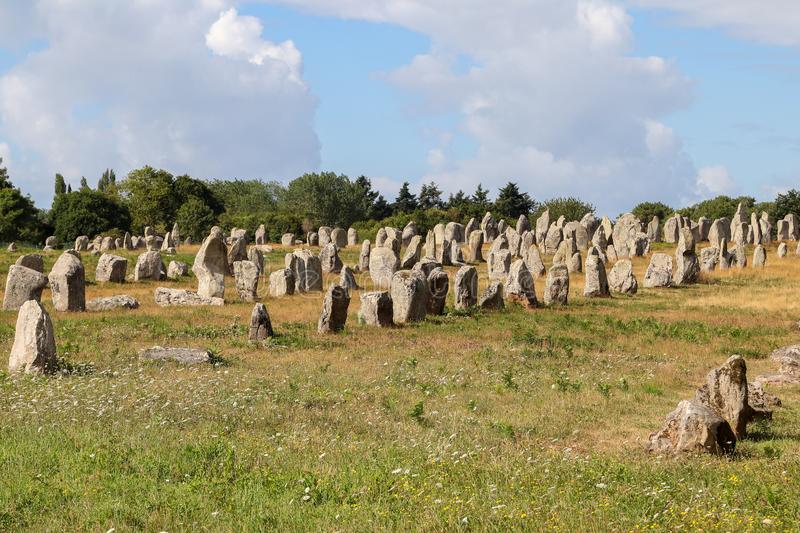
(卡尔纳克巨石遗迹)
joftheholly
Newgrange passage tomb in Ireland- https://en.wikipedia.org/wiki/Newgrange
The sun lights up the inner chamber on the shortest day of the year showing impressive knowledge for a structure built 3200 BC in Ireland
爱尔兰的纽格兰奇长廊式墓室-https://en.wikipedia.org/wiki/Newgrange
太阳会在一年中最短的一天照亮内室,这个爱尔兰公元前3200年建造的一个结构展现了当时的人们令人印象深刻的知识
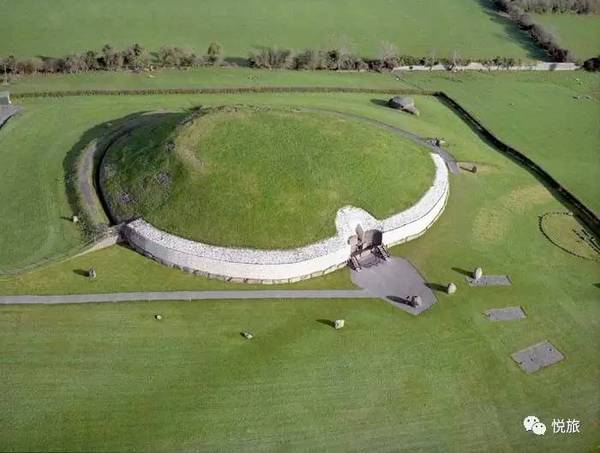
(纽格兰奇长廊式墓室)
[dexed]
I would say the Moai on Easter Island. There are about a thousand of them, they weigh more than 10 tons on average. Because of the European invasion in the second half of the 19th century, almost nothing is known about the symbolism of these statues or how the Rapa Nui transported and erected them.
我想说的是复活节岛上的石像。它们大约有一千个,平均重量超过10吨。
由于19世纪下半叶的欧洲入侵,几乎没有人知道这些雕像的象征意义或拉帕努伊岛人是如何运输和竖立它们的。
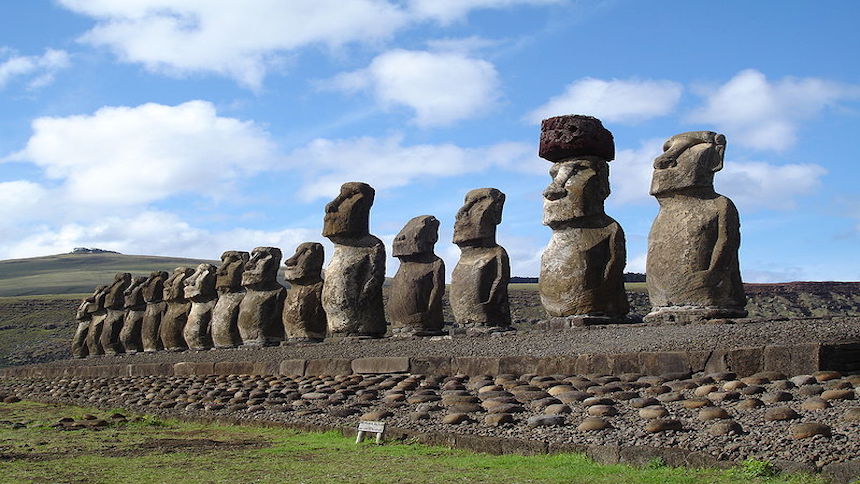 (复活节岛石像)
(复活节岛石像)
boy_wolf
Some archaeologists recently made a pretty reasonable assertion the Maoi were used as markers for farms & fresh water sources. The commonly held theory about their transportation is that Rapa Nui was once forested, but deforested in the process of rolling the giant stones around on logs.
一些考古学家最近做出了一个相当合理的断言,这些石像被用作农场和淡水来源的标记。 关于他们运输的普遍理论是,拉帕努伊岛曾经是森林,但为了用来滚动巨大的石头在这个过程中被砍伐完了。
CommandoDude
how the Rapa Nui transported and erected them.
Actually that's pretty well known, they were transported using trees (why the Island is now deforested).
“拉帕努伊人是如何运输和竖立它们的。”
事实上,这是众所周知的,他们是用树木运输的(这就是为什么这个岛现在是光秃秃的)。
[dexed]
Almost nothing is known for sure, I would say (no written or orally transmitted testimonies). Some research was done and I think the use of trees is the most probable hypothesis indeed. But I'll look into it again, see if no one disputes that anymore. That's a good point you made in any case
我想说,几乎没有什么是可以确定的(没有书面或口头转达的证词)。一些研究已经完成,我认为使用树木确实是最可能的假设。但我会再查一遍,看看有没有人再对此有异议。不管怎样,你说的观点很好。
CommandoDude
The soil erosion on the island basically confirms there used to be trees.
岛上的土壤侵蚀基本上证实了曾经有树木。
[dexed]
That's true. Also, in 2000 you have Hunt and Carl Lippo suggest that Polynesian rats may have played a part in the deforestation. And then for the transport you have competing hypothesis (see references at the end): either they were moved horizontally, rolling on tree trunks, or they were moved upright with ropes, 'walking'.
Based on few readings, it does not seem there is a consensus or definite proof for the ways of the Rapa Nui pre-European arrival. But again, this is based on a few readings, I have no pretensions in this area. If you have a more recent article, feel free to post it, I'll read it with interest.
确实,另外,在2000年,亨特和卡尔·利波认为波利尼西亚老鼠可能在毁林中起了一定作用。然后,对于运输,你会得到一个相互矛盾的假设(见最后的参考文献):要么它们在树干上滚动被水平移动,要么它们被绳子直立移动着“行走”。
根据我少量的阅读,似乎还没有一个共识或明确的证据,以证明拉帕努伊人在欧洲人到来前运输的方式。但同样,这是基于我少量的阅读数量的说法,这不是我的自谦。如果你有更新的文章,请随时发表,我会很感兴趣去阅读它。
In term of economic impact or total size: China's Grand Canal.
就经济影响或总规模而言:中国大运河。

(京杭大运河)
AlexAiakides
It’s not like it didn’t cost China, especially the dynasty Sui that was responsible for building it dearly.
这并不意味着它没有让中国付出代价,尤其是负责建造它的隋朝。
deezee72
The botched war against Gorgoryeo was a more immediate cause of the fall of the Sui dynasty.
The future Emperor Gaozu of Tang even served as a logistics officer in that campaign before being reassigned to fighting the Eastern Turks. Many of the other early supporters of the Tang were other military officials dissatisfied with the handling of the war.
When you break it down, nearly every one of the ancient wonders came at an enormous price. And while the cost of these mega-projects certainly took its toll, the fact that renovations of the Grand Canal continued into the Tang dynasty casts a lot of doubt on the claim that overspending on infrastructure is what brought down the Sui.
对高句丽的拙劣战争是隋朝灭亡的一个更直接的原因。
未来的唐高祖甚至在这次战役中担任后勤官员,然后被重新分配到与东突厥人作战。许多其他早期支持唐的人是其他军事官员,对战争的处理都感到不满。
当你细究,几乎每一个古老的奇迹都是以巨大的代价换来的。虽然这些大型项目的成本确实造成了损失,但在唐代,大运河的翻修仍在继续,这一事实使人们对基础设施的超支是导致隋朝灭亡的原因的这种说法产生了很大的怀疑。
[dexed]
Didn’t it kill a shitload of peasants?
它不是导致了很多农民的死亡吗?
Keighlon
The grand canal system is absolutely astonishing. While europe was still chucking sticks at each other and living in huts china was building country wide water highways. The manpower forethought and organization of it blows my mind
大运河系统绝对是惊人的。当欧洲还在互相残杀,住在茅屋里的时候,中国正在建设全国范围的水上公路。他对人力的筹划和组织度让我大吃一惊。
deezee72
The Grand Canal is an amazing demonstration of China's organization, but let's not get too carried away. It was built at the end of the 6th century - I don't think it's too fair to say that Europe was "chucking sticks at each other and living in huts".
大运河是中国组织度的一个惊人的展示,但我们不要太激动。 它建于6世纪末——我不认为说欧洲“还在互相残杀,住在茅屋里”是一个公平的说法。
[dexed]
At that moment you can say that Europe (apart from Bizantine / East Roman Empire) was figuratively in a state of chucking sticks, because the fall of the Roman Empire brought a severe collapse of institutions and knowledge loss that might have been less developed than ancient Greece (in terms of institutional complexity and knowledge production), and was victim of wave after wave of sacks from German/Huns/Norsemen/Turkic and Mongols, whom may have indeed been living in structures closer to "huts" than to roman cities and villas. The Eastern Roman Empire and the Middle East were flourishing tho, so the "sticks and huts" hyperbole is half appropiate.
在那个时候你可以说欧洲(除了拜占庭/东罗马帝国) 确实处于一种互相残杀的状态,因为罗马帝国的垮台带来了制度的严重崩溃和知识的损失,导致其可能比古希腊还欠发达(在体制复杂性和知识生产方面),而且他们是一波又一波的洗劫的受害者,这些洗劫来自日耳曼/匈牙利/挪威人/突厥人和蒙古人,他们也可能确实生活在比罗马城市和别墅相比更接近“小屋”的建筑中。与此同时东罗马帝国和中东地区都在欣欣向荣,因此“残杀与茅屋”的夸张说法至少有一半是对的。
Sn_rk
Not really, no. Roman concepts of administration and infrastructure were being maintained for a long time, even if they slowly eroded.
并非如此,真的。罗马的行政管理和基础设施概念在欧洲被维持了很长一段时间,即使它们慢慢地被侵蚀。
Intranetusa
europe was still chucking sticks at each other and living in huts
No, that comes from incorrect stereotypical portrayals of the "Dark Ages." In the 6th century, the Eastern Roman Empire was rich, powerful, and technologically advanced, and emperor Justinian was partially successful at reconquering the Roman territories of the Western Empire that were lost.
The Scandinavian and Germanic people who also invaded Western Rome adopted many aspects of the Romans - culture, government, Latin, fashion, architecture, etc - so they weren't simply living in huts.
“还在互相残杀,住在茅屋里”
不,这是来自对“黑暗时代”的不正确的刻板印象。在6世纪,东罗马帝国是富有的,强大的,技术先进的,查士丁尼皇帝部分成功地重新征服了失去的西罗马帝国的罗马领土。
斯堪的纳维亚和日耳曼人虽然入侵了西罗马,但是他们接受了罗马人的许多方面--文化、政府、拉丁、时尚、建筑等--所以他们不仅仅住在小茅屋里。
Intranetusa
On a similar note, the Qin State's Fish Mouth Levee irrigation and flood control system in use to this day: https://en.wikipedia.org/wiki/Dujiangyan
类似地,秦国的河口灌溉和防洪系统至今仍在使用:https://en.wikipedia.org/wiki/Dujiangyan(都江堰的维基百科)
knavillus
The wonder that always amazes me is the Roman road system, including bridges. The number of bridges still standing and in use today was surprising to me and the scale of the road system at its peak was impressive.
令我惊讶的是罗马的道路系统,包括桥梁。今天仍然矗立和使用的来自罗马时代的桥梁数量令我感到惊讶,公路系统在高峰时的规模令人印象深刻。

(古罗马桥梁)
Qafqa
Don't forget the aqueducts.
别忘了引水渠

(罗马引水渠)
recuise
Yeah, but what have the Romans ever done for us?
是啊,但是罗马人为我们做了什么?
ecknorr
Could not have the Superbowl without Roman numerals.
没有罗马数字就不可能有超级碗。
SantasBananas
People often praise the Roman bridges, and I certainly agree that they are impressive and covered the empire in such a scale that I would not have dreamed of back in those days.
At the same time, the engineer in me can't help but chuckle at being impressed that those bridges still stand. That's a sign of those bridges being overbuilt - they put too much effort and resources into the structures to make them not fail for over a thousand years, when honestly they only needed them for a few hundred. That's effort and resources that they could have applied to other projects.
If I could commission a bridge that would last 300 years for $100,000 or one that lasts a millenium for $200,000, I'd pick the first in a heartbeat. Why spend an extra $100,000 on something functionally identical? In 300 years we might be beyond the point of using bridges, or we may have better bridge design for cheaper, or the location might be irrelevant. It's a waste of effort, imho. Sure, people in the future might be impressed, but that's not really worth much to me. It would be trivial for modern engineers to build bridges that last a millennium as well, it's just not worthwhile.
人们经常赞美罗马的桥梁,我当然同意它们覆盖帝国的规模令人印象深刻,以至于我有时不禁梦回罗马时代。
同时,作为工程师的我忍不住对因为那些桥梁仍然屹立不倒而感到印象深刻的人发笑。这是那些桥梁被过度建造的迹象--他们在结构中投入了太多的努力和资源,使他们在一千多年里不会倒塌,但老实说,他们只需要这些桥能用几百年。这些努力和资源他们本可以应用于其他项目的。
如果我能委托建造一座桥,可以花10万用300年,也可以用20万用一千年,我会选择第一座。为什么要花多10万在功能相同的东西上?在300年内,我们可能已经无需再使用这条桥梁,或者我们可能有更好的桥梁设计,以更便宜,或者位置可能更好。在我看来这就是浪费精力。 当然,未来的人们可能会对此印象深刻,但这对我来说并不太值得。对于现代工程师来说,建造长达一千年的桥梁也是微不足道的,但这是不值得的。
knavillus
I don’t think they thought in these terms though, structural and materials analysis that can predict longevity of a structure just didn’t exist back then. I’m guessing the primary motivation by the designer was to ensure it didn’t fail at any cost. I hadn’t really thought of it in those terms though, it’s really funny!
我不认为他们用这些方式来思考,但是,能够预测结构寿命的结构和材料分析在当时不存在。 我猜设计师的主要动机是确保它不会倒。不过,我从来没有以这种角度想过,这真的很有趣!
Arsnicthegreat
I'm not an expert, but I recall that before we developed the more complex mathematics to precisely engineer things to tight tolerance, the general solution was to estimate and round up, at risk of greater expense, to avoid failure.
我不是专家,但我记得,在我们开发更复杂的数学来精确地将事物设计到严格的容忍度之前,一般的解决方案是进行估计和总结,用更大的费用,来避免失败。
SantasBananas
Yeah, that's exactly my point - they made the bridges with such longevity because they didn't have the engineering confidence to not.
Still massively impressive structures, obviously. I'm just always a little ticked when people say they were able to build structures we can't anymore, or some other nonsense.
是的,这正是我的观点-他们建造了如此长寿的桥梁,是因为他们没有工程信心。
当然,这还是令人印象深刻的结构。当人们说古人能建造我们现代无法再建造的结构,或者其他类似的一些废话时,我总是有点生气。
idan_zamir
Gobekli Tepe definitely counts in my book. It is around 12,000 years old! An incredible a achivement for the time.
哥贝克力石阵在我的这里肯定很重要。它大约有12000岁了!这是一个不可思议的成就。

(哥贝克力石阵)
Andrewescocia
yuppers needs more exposure, if i was of a conspiratorial mind i would say the history of it is being repressed so they don't have to rip up all the text books and start again,
对哒,它需要更多的曝光,如果我是一个阴谋论者,我会说,它的历史正在故意被压制,这样他们就不必撕毁现在所有的教科书,重新编过。
Intranetusa
From what I've read, it's hard to estimate the age of Gobekli Tepe because different people/civilizations from different time periods kept inhabiting the same area and building on top of each other's ruins or even digging up the previous ruins. This may have caused intermingling of different artifacts from different timeperiods that can create confusion.
It's like if you planned your burial with your body buried with an iphone X, medi knight helmet from 1200 AD, and a Roman gladius from 100 BC...in a Native American burial ground continuously used from 1200 AD to the present day. And then a giant war happens and a totally different civilization in 3000 AD starts digging, building, and burying people in the same area. That'll confuse the hell out of archaeologists from 4000 AD.
But nonetheless, the age ranges for Gobekli Tepe are all pretty old, so it's all pretty impressive and thought provoking.
根据我所读的东西,哥贝克力石阵的年龄很难估计,因为不同时期的不同人/文明一直居住在同一地区,并在彼此的废墟上建造,甚至挖掘以前的废墟。这可能导致不同时间段的不同工件混合在一起,从而造成了混淆。
就像你计划用iPhoneX,公元1200年的中世纪骑士头盔,和公元前100年的罗马短剑作为你的陪葬品把你埋在一个从公元1200年到现在都在持续使用的美洲原住民的墓地里一样。然后发生了一场巨大的战争,公元3000年,一个完全不同的文明开始在同一地区挖掘、建造和埋葬人们。于是公元4000年开始的考古学家们就会搞糊涂。
但尽管如此,哥贝克力石阵的年龄范围还是很古老的,所以这都是相当令人印象深刻和发人深省的。
Andrewescocia
That'll confuse the hell out of archaeologists from 4000 AD.
I'm sure they will think we all worshipped a god called "Starbucks" anyway.
"Any town of import would have a shrine dedicated to Starbucks, worship was done by consuming a psychoactive beverage and the shrines where believed to stimulate trade and discourse"
“于是公元4000年开始的考古学家们就会搞糊涂”
我相信他们会认为我们都崇拜一个叫“星巴克”的神。
“任何重要的小镇都会有一个专门为星巴克服务的神社,崇拜是通过饮用一种精神饮料和那些被认为能刺激贸易和言论的神社来完成的”
Intranetusa
Ah yes, the building known as "Starbucks" and its stash of burnt black beans were used for "ceremonial and religious purposes."
啊哈,是的,这座被称为“星巴克”的建筑和它存放的烧焦的黑豆被用于“仪式和宗教目的。”
torn-ainbow
The Budj Bim eel traps. Aboriginal people changed the landscape around an exctinct volcano, carving channels and creating dams to create an ancient aquaculture system that provided them food all year round.
The eel traps at Budj Bim comprise a vast network of weirs, dams and stone canals to manipulate water levels in various lake basins. Some of the channels are hundreds of metres long and were dug out of basalt lava flow.
These structures force eels and other aquatic life into traps as water levels rise and fall. The canals also appear to have been used to create holding ponds to keep eels fresh until they were needed for food. Not only did this provide the region’s Gunditjmara people with a year-round food supply, it was also important for trade.
Located in southwest Victoria, Budj Bim has been carbon dated to 6600 years old, meaning it predates more internationally well-known examples of ancient engineering like the Egyptian pyramids or Stonehenge.
我认为是布吉必姆鳗鱼陷阱,土著人改变了一座火山周围的景观,雕刻了通道,建造了水坝,以建立一个古老的水产养殖系统,全年为他们提供食物。
“布吉必姆的鳗鱼陷阱包括一个巨大的堰、水坝和石渠网络,以操纵各种湖泊盆地的水位。 其中一些通道有数百米长,是从玄武岩熔岩流中挖出来的。
随着水位的上升和下降,这些结构迫使鳗鱼和其他水生生物进入陷阱。这些通道似乎也被用来建造池塘,以保持鳗鱼的新鲜,直到他们需要食物。这不仅为该地区的贡第杰马若人提供了全年的粮食供应,而且对贸易也很重要。
布吉必姆位于维多利亚西南部,它的碳龄已达6600年,这意味着它早于更多国际知名的古代工程例子,如埃及金字塔或巨石阵。”
 (布吉必姆的鳗鱼陷阱)
(布吉必姆的鳗鱼陷阱)laszlo92
The irrigation systems by the Khmer around Angkor Wat are simply astounding. In a quite rough and unhospitable environment creating a place with that sort of irrigation supporting a complex society is a wonder.
吴哥窟周围的高棉人的灌溉系统简直令人震惊。在一个相当粗糙和不适宜居住的环境中,创造一个有这种灌溉系统支持复杂社会的地方是一个奇迹。
DarthRevan456
Aren't those medi though?
不过这不是中世纪的吗?
laszlo92
Well I'd say Medi is more of a Europe based period, but they're not Ancient you're right. Apologies.
怎么说呢,我想说中世纪更多的是以欧洲为背景基础的时期,但它们确实不是古老的,你说得对。抱歉。
DarthRevan456
Angkor is pretty amazing though
不过,吴哥窟真的很神奇
obdes
Carnac stones I visited them two years ago. It is still a mystery why they where put up. You can find similar stone rows on other coastlines all stemming from the same period. It's an exciting place.
卡尔纳克巨石遗迹, 两年前我去拜访过。 为什么他们在那里放这个东西,仍然是个谜。 你可以在其他海岸线上找到类似的石排,所有这些都来自同一时期。 这是个令人兴奋的地方。

(卡尔纳克巨石遗迹)
joftheholly
Newgrange passage tomb in Ireland- https://en.wikipedia.org/wiki/Newgrange
The sun lights up the inner chamber on the shortest day of the year showing impressive knowledge for a structure built 3200 BC in Ireland
爱尔兰的纽格兰奇长廊式墓室-https://en.wikipedia.org/wiki/Newgrange
太阳会在一年中最短的一天照亮内室,这个爱尔兰公元前3200年建造的一个结构展现了当时的人们令人印象深刻的知识

(纽格兰奇长廊式墓室)
[dexed]
I would say the Moai on Easter Island. There are about a thousand of them, they weigh more than 10 tons on average. Because of the European invasion in the second half of the 19th century, almost nothing is known about the symbolism of these statues or how the Rapa Nui transported and erected them.
我想说的是复活节岛上的石像。它们大约有一千个,平均重量超过10吨。
由于19世纪下半叶的欧洲入侵,几乎没有人知道这些雕像的象征意义或拉帕努伊岛人是如何运输和竖立它们的。
 (复活节岛石像)
(复活节岛石像)boy_wolf
Some archaeologists recently made a pretty reasonable assertion the Maoi were used as markers for farms & fresh water sources. The commonly held theory about their transportation is that Rapa Nui was once forested, but deforested in the process of rolling the giant stones around on logs.
一些考古学家最近做出了一个相当合理的断言,这些石像被用作农场和淡水来源的标记。 关于他们运输的普遍理论是,拉帕努伊岛曾经是森林,但为了用来滚动巨大的石头在这个过程中被砍伐完了。
CommandoDude
how the Rapa Nui transported and erected them.
Actually that's pretty well known, they were transported using trees (why the Island is now deforested).
“拉帕努伊人是如何运输和竖立它们的。”
事实上,这是众所周知的,他们是用树木运输的(这就是为什么这个岛现在是光秃秃的)。
[dexed]
Almost nothing is known for sure, I would say (no written or orally transmitted testimonies). Some research was done and I think the use of trees is the most probable hypothesis indeed. But I'll look into it again, see if no one disputes that anymore. That's a good point you made in any case
我想说,几乎没有什么是可以确定的(没有书面或口头转达的证词)。一些研究已经完成,我认为使用树木确实是最可能的假设。但我会再查一遍,看看有没有人再对此有异议。不管怎样,你说的观点很好。
CommandoDude
The soil erosion on the island basically confirms there used to be trees.
岛上的土壤侵蚀基本上证实了曾经有树木。
[dexed]
That's true. Also, in 2000 you have Hunt and Carl Lippo suggest that Polynesian rats may have played a part in the deforestation. And then for the transport you have competing hypothesis (see references at the end): either they were moved horizontally, rolling on tree trunks, or they were moved upright with ropes, 'walking'.
Based on few readings, it does not seem there is a consensus or definite proof for the ways of the Rapa Nui pre-European arrival. But again, this is based on a few readings, I have no pretensions in this area. If you have a more recent article, feel free to post it, I'll read it with interest.
确实,另外,在2000年,亨特和卡尔·利波认为波利尼西亚老鼠可能在毁林中起了一定作用。然后,对于运输,你会得到一个相互矛盾的假设(见最后的参考文献):要么它们在树干上滚动被水平移动,要么它们被绳子直立移动着“行走”。
根据我少量的阅读,似乎还没有一个共识或明确的证据,以证明拉帕努伊人在欧洲人到来前运输的方式。但同样,这是基于我少量的阅读数量的说法,这不是我的自谦。如果你有更新的文章,请随时发表,我会很感兴趣去阅读它。
很赞 5
收藏